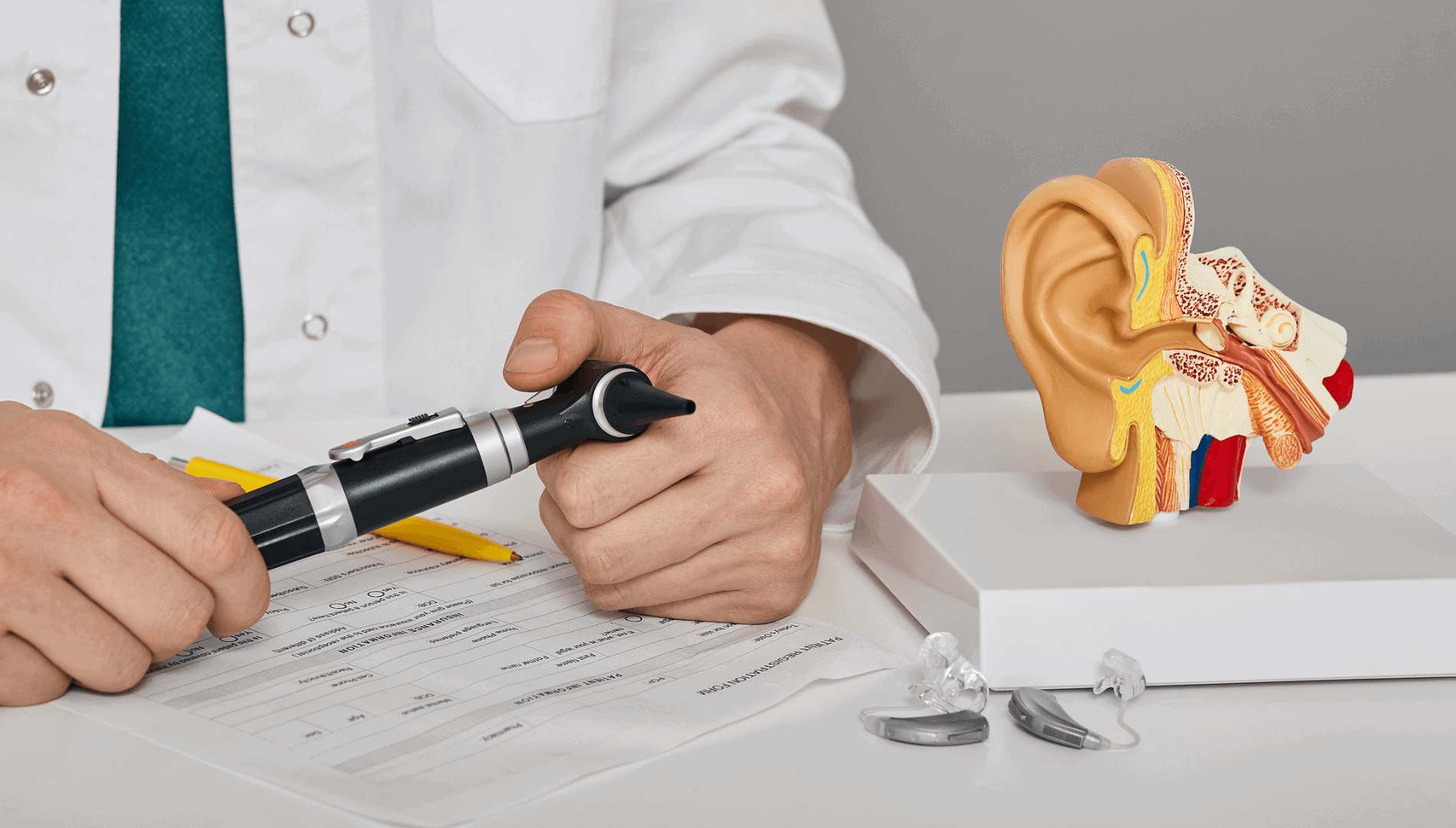
Hearing loss can affect people in different ways and it is important to understand the different types of hearing loss to manage them effectively. Hearing loss occurs when there’s a problem with one or more parts of the ear. It can affect one or both ears and can range from mild to severe.
Understanding the basics helps us grasp the more nuanced differences between types of hearing loss. Types of hearing loss generally fall into three categories: sensorineural, conductive, and mixed. Each type arises from different issues within the ear and has different treatments and implications.
What is Sensorineural Hearing Loss?
Sensorineural hearing loss happens when there’s damage to the inner ear or the auditory nerve. It is the most common type of hearing loss. Causes include aging, exposure to loud noises, infections, and certain medications. This type of hearing loss is usually permanent because the inner ear or nerve damage cannot be repaired easily.
People with sensorineural hearing loss often find it challenging to understand speech, particularly in noisy environments. They might also experience tinnitus, a ringing or buzzing sound in the ear.
What is Conductive Hearing Loss?
Conductive hearing loss occurs when sound waves cannot travel efficiently through the outer or middle ear. This type is often caused by blockages, fluid in the middle ear, ear infections, or damage to the ear’s bones. Unlike sensorineural hearing loss, conductive hearing loss is usually temporary and often treatable.
Many treatments are available, depending on the cause. For instance, removing earwax or treating an ear infection can sometimes restore hearing completely. In other cases, surgery might be necessary to repair damaged structures.
What is Mixed Hearing Loss?
Mixed hearing loss is a combination of both sensorineural and conductive hearing loss. This means there are problems in the inner ear or auditory nerve, as well as issues in the outer or middle ear.
For example, someone might have age-related sensorineural hearing loss and also suffer from an ear infection causing conductive hearing loss. Treating mixed hearing loss often requires addressing both components, possibly combining medications, surgeries, and hearing aids.
Causes of Sensorineural Hearing Loss
Understanding what causes sensorineural hearing loss helps differentiate it from other types. Age-related hearing loss, or presbycusis, occurs due to the natural aging process, leading to wear and tear on the inner ear. Prolonged exposure to loud noises can damage the inner ear’s hair cells, contributing to hearing loss over time. Infections such as mumps or meningitis can also impact the inner ear and cause hearing issues. Certain medications are ototoxic, meaning they can harm the inner ear and auditory nerve. Additionally, some people may have a genetic predisposition to sensorineural hearing loss.
Differences in Symptoms and Diagnosis
While all types of hearing loss lead to difficulty hearing, the symptoms and ways to diagnose them differ. Sensorineural hearing loss often results in poor speech understanding, difficulty in noisy places, and possible tinnitus. Conversational speech might sound muffled, and high-pitched sounds could be especially hard to hear.
Conductive hearing loss usually involves a reduction in sound level or the ability to hear faint sounds. People with this type might find that voices sound distant or muffled, but they might not struggle with clarity as much as those with sensorineural loss.
Diagnosing these differs too. A hearing health exam is essential for identifying the type and extent of hearing loss. For sensorineural hearing loss, we use pure-tone audiometry and speech recognition tests. Conductive hearing loss might be diagnosed with physical examinations of the ear, looking for blockages or infections.
Treatment Options
Treatment options vary greatly between these types of hearing loss. Sensorineural hearing loss is often managed with hearing aids or cochlear implants, aiming to improve sound amplification and clarity. Since this type of loss is usually permanent, ongoing support is important.
For conductive hearing loss, treatments often address the underlying issue. Solutions might include medication for infections, the removal of blockages, or surgeries to repair structural issues.
Regular hearing health exams are vital to catching hearing loss early, regardless of the type. These exams help identify any issues before they worsen, providing a chance for early intervention. Those exposed to risk factors such as loud noises or certain medications should prioritize these exams to ensure their hearing remains in good condition.
